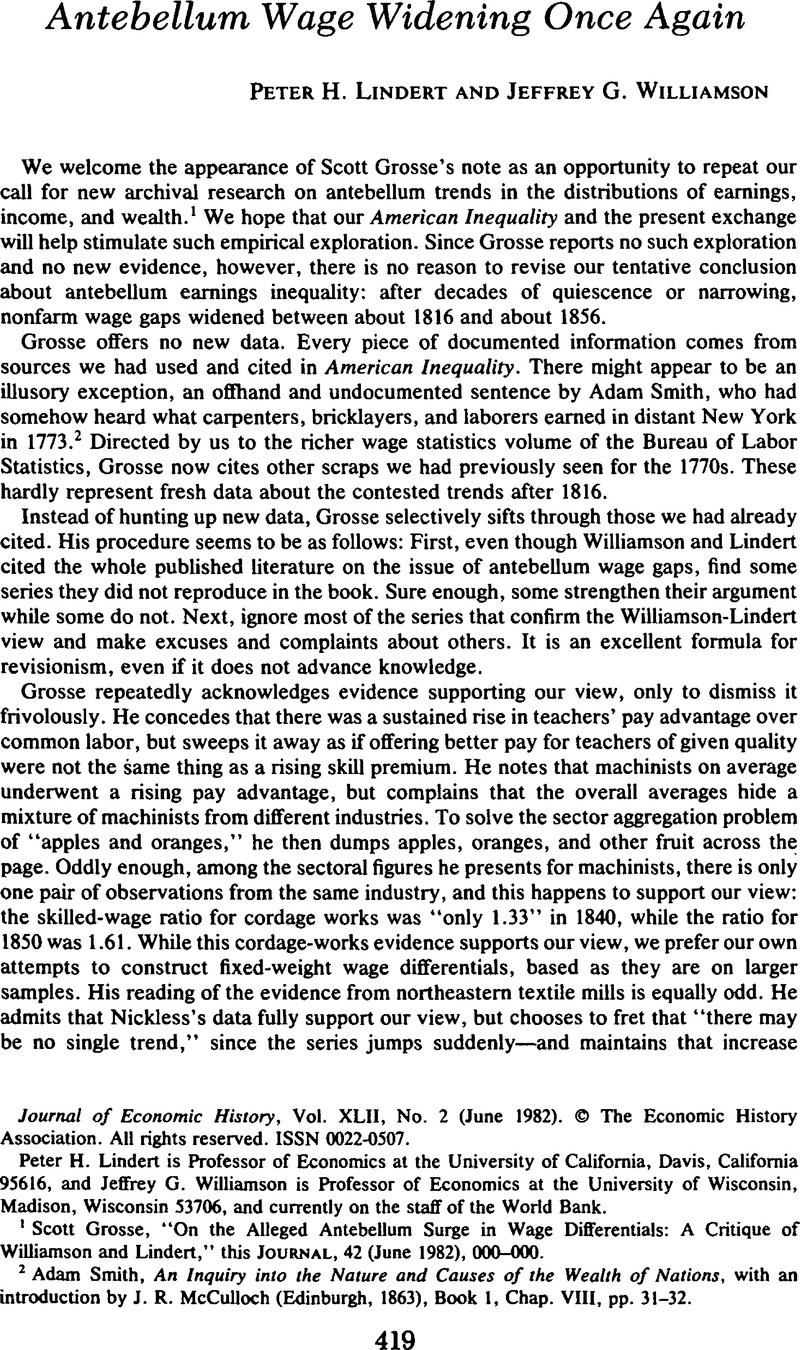No CrossRef data available.
Published online by Cambridge University Press: 03 March 2009

1 Grosse, Scott, “On the Alleged Antebellum Surge in Wage Differentials: A Critique of Williamson and Lindert,” this JOURNAL, 42 (06 1982), 000–000.Google Scholar
2 Smith, Adam, An Inquiry into the Nature and Causes of the Wealth of Nations, with an introduction by McCulloch, J. R. (Edinburgh, 1863), Book I, Chap. VIII, pp. 31–32.Google Scholar
3 Coelho, Philip R. P. and Shepherd, James F., “Regional Differences in Real Wages: The United States, 1851–1880,” Explorations in Economic History, 13 (04 1976), p. 228.CrossRefGoogle Scholar
4 Aldrich, Mark, “Earnings of American Civil Engineers, 1820–1859,” this JOURNAL, 31 (06 1971), p. 414.Google Scholar
5 To avoid overstating our case, we too used (on p. 70) the fastest-rising series for unskilled labor. Other wage series for common labor rose more slowly or not at all between about the 1830s and the 1950s. See Lebergott, Stanley, Manpower in Economic Growth (New York, 1964), Table A-25, and Massachusetts Bureau of Statistics of Labor, Sixteenth Annual Report, pp. 454–55.Google ScholarIt further appears that the geography of the engineers' pay series was shifting from the highest- wage Northeast to the lower-wage South and East North Central regions (Aldrich, pp. 413–15). Their pay should thus be compared with that of unskilled laborers whose location drifted similarly. Correct wage geography would tilt the trend further toward rising wage premia for engineers. For state and regional wage averages bearing out this point, see Lebergott, Manpower, Table A-25, and Coelho and Shepherd, “Regional Differences,” p. 229.Google Scholar (On the other hand, some of the data in U.S. Bureau of Labor Statistics, History of Wages in the United States from Colonial Times to 1928 (Washington, D.C. 1929) do not show consistent regional contrasts.)Google Scholar